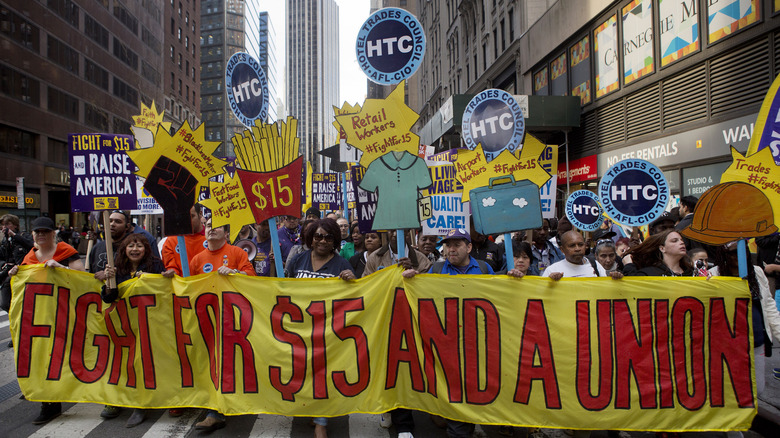New Wage Tracker Is Holding Restaurant Chains Accountable
If you're looking for a career that allows you to work long hours on weekends and holidays for a sometimes barely livable wage, check out the service industry. The Economic Policy Institute is assessing the labor practices of 66 retail and foodservice companies with a new tracker that looks at compensation levels for employees and executives. Spoiler alert: There's a high level of low wages for food service workers.
The Shift Project tracked the wages of service industry workers from March 2021 to November 2021, a notoriously tumultuous time for restaurants and grocery stores dealing with pandemic-related price hikes. The results showed that 56% of hourly service workers surveyed made under $15 per hour, with the food service and hospitality sectors posting the lowest wages.
If you're wondering why the teenager at Subway isn't fully committed to making the best $5 footlong, it might be because the sandwich chain pays 23% of its workforce under $10 an hour. McDonald's, Pizza Hut, and Waffle House are also named as employers offering similarly low wages. Wages that low are especially notable when considering that not all companies compensate accordingly; In-N-Out Burger pays 14% of workers at least $20 an hour and only 9% under $15 per hour, an industry high among fast food chains.
Comparing wages may help keep companies in check
Shift's survey responses showed that while low wages are an issue across the service industry, grocery workers and delivery personnel faired better with slightly higher compensation levels. Of course, the industry professionals earning the most were the chief executive officers. While few expect executives and hourly workers to be equally compensated, tracking and comparing pay discrepancies might encourage companies to take a harder look at employees' wages.
The height of the pandemic wreaked havoc on the restaurant industry and continues to challenge food service workers. Despite the dire need for employees willing to work in a sometimes dangerous environment, often without paid sick leave or health care (just 31% of restaurants offered health insurance to employees in 2019, per Restaurant Dive), the Institute for Policy Studies reports hourly worker wages droped 2% in 2020, averaging just over $28,000 annually. Meanwhile, CEO salaries increased to an average of $15.3 million during the same time period. Perhaps unsurprisingly, some companies with the highest executive salaries pay their employees the lowest hourly wages.
Companies like Whole Foods set a new standard for wages by paying only 1% of workers less than $15 per hour, while the industry average is 49%. Some hope that tracking low wages and applauding companies that compensate fairly at all levels might improve employee earnings.

